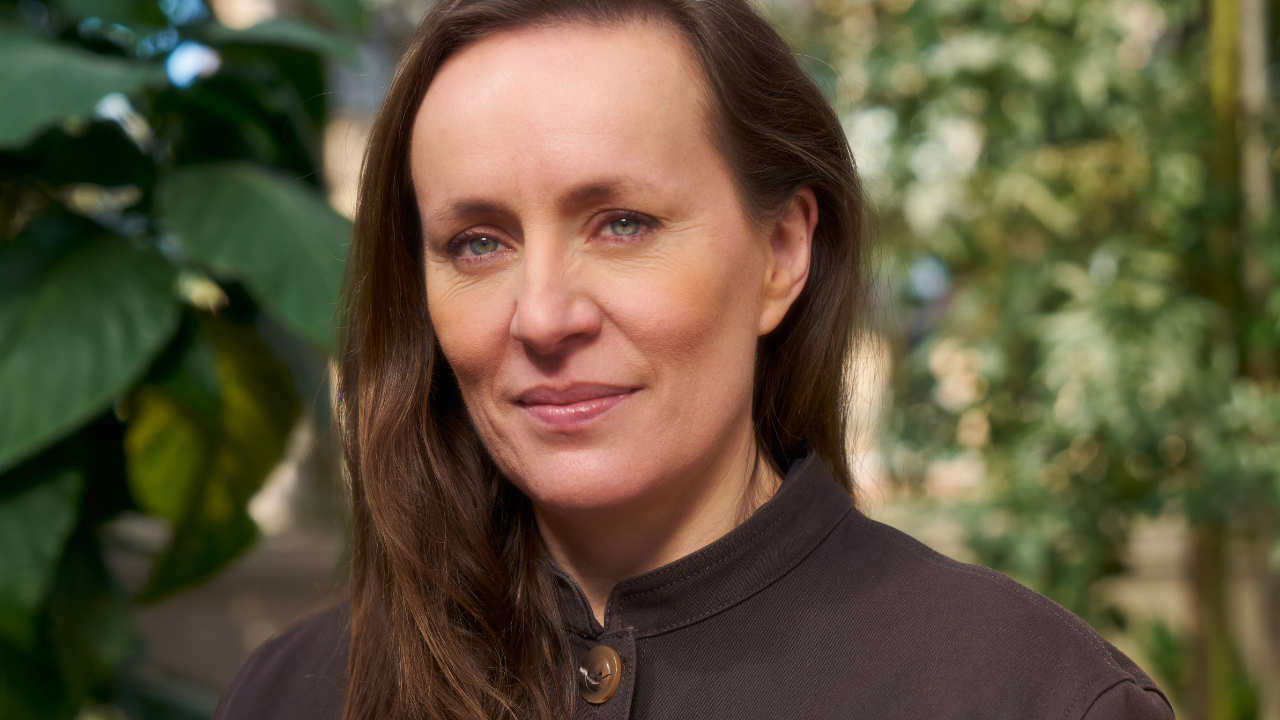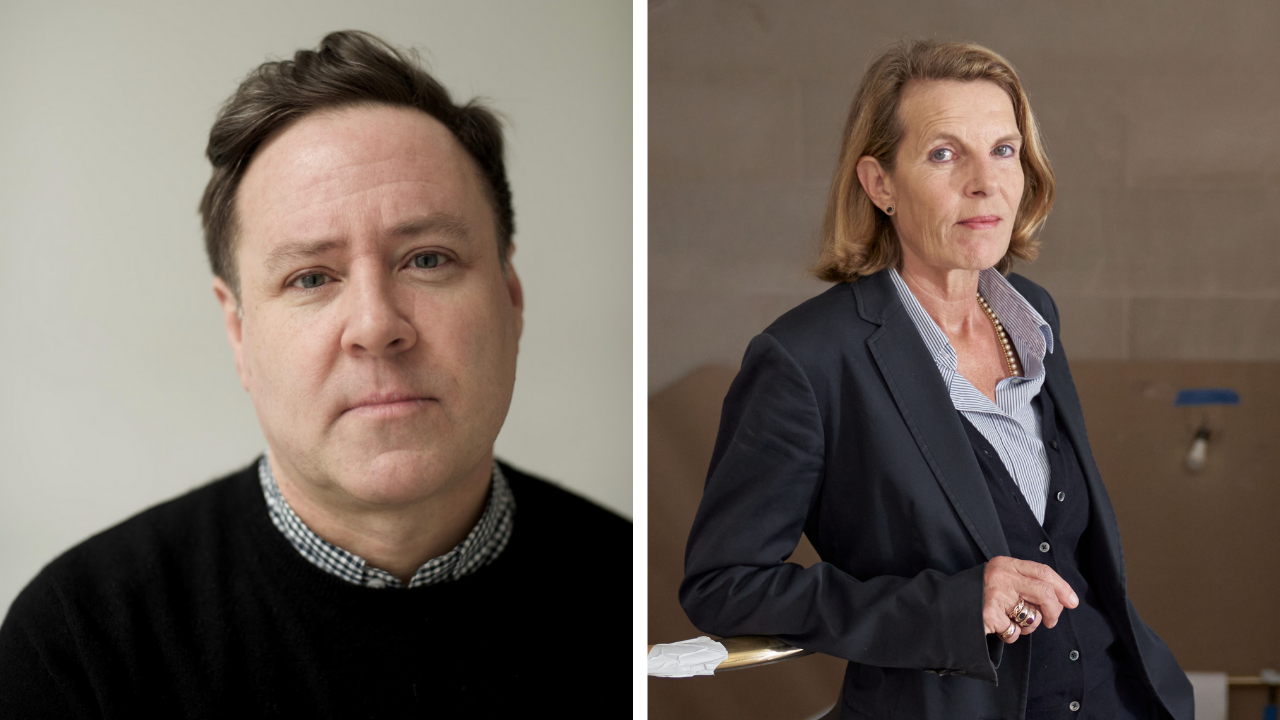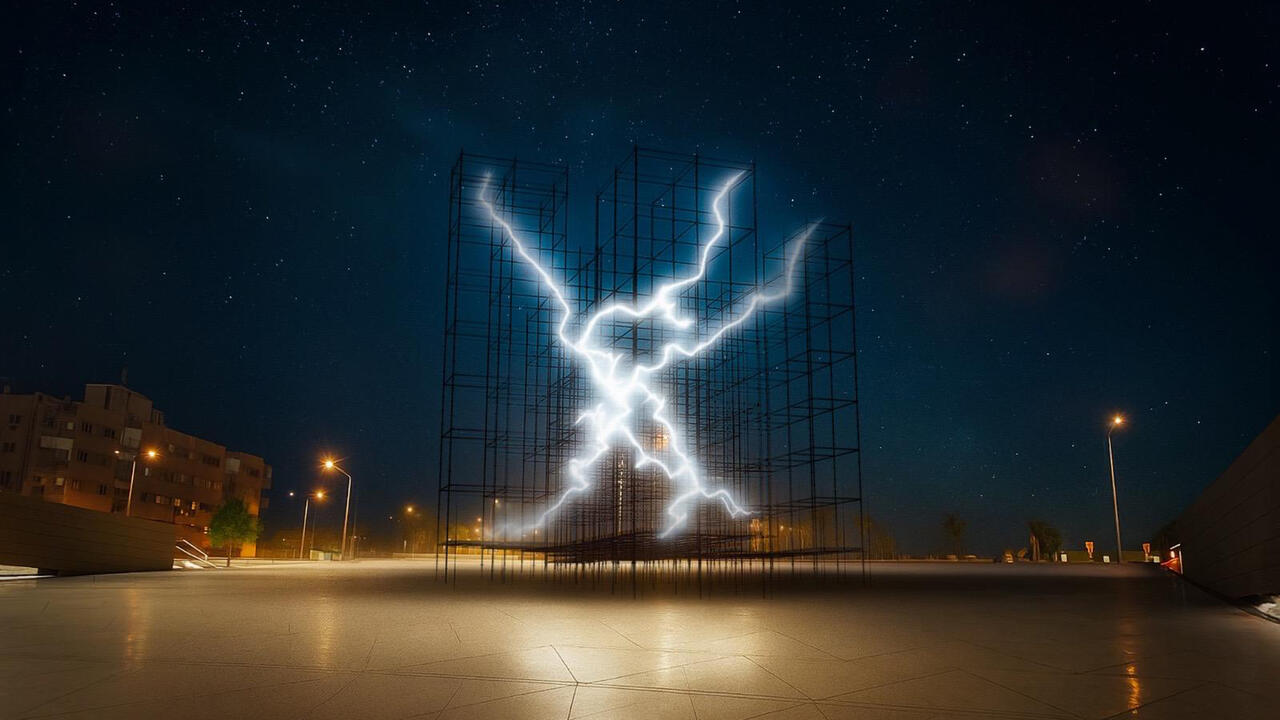Going Underground
Philip Hoare in conversation with Michael Bracewell
Philip Hoare in conversation with Michael Bracewell
Michael Bracewell: Having written biographies of Noel Coward and Stephen Tennant, both key players in defining a glamorous or even flippant image of the 20s and 30s, your new book, Wilde's Last Stand - Decadence, Conspiracy and The First World War examines a slightly earlier, much darker phase in English social history. But its concerns seem hugely contemporary and relevant to London in the 90s, which may be why it's on the Best Seller list. Can you summarise the book's principal subject?
Philip Hoare: Okay. In 1918, a mad maverick MP, Noel Pemberton Billing alleged that the German Secret Service had a clandestine black book containing the names of 47,000 members of the British establishment who were sexual perverts and were being blackmailed by the Germans, and this was why we were losing the War. Which, in 1918, we were. Pemberton Billing was basically a proto-fascist for his times; he was working with people who would later go on to work for the British Union of Fascists and help found the Imperial Fascist League. But he was also a real product of the Edwardian era: an entrepreneur, an aviator, an inventor - he took out 2,000 patents in his time. He was a futurist, of sorts. He loved fast cars - his car was shaped like a torpedo; he designed an aeroplane that could also travel on water. He wore long collars with brooches instead of ties; he wore a monocle screwed into his face. He looked ascetic and handsome, with the charisma of a fascist dictator.
There are some amazing photographs of Billing, standing on the wing of his monoplane, campaigning for his 'Vigilante' party on the Mile End Road. He was nothing so much as an early version of Hitler, Moseley, Goering or any one of those people. So the book is about Billing's crusade, through the courts, against what he saw as the lingering decadence of the Oscar Wilde cult, still at work in England.
It's interesting how the geography of London remains a cultural constant. In the late 70s you had the British Movement marching in the East End and post-punk clubs emerging in Covent Garden and the West End. Your incredible detailing and reconstruction of the Edwardian equivalent in Wilde's Last Stand makes recent history telescope in on itself.
There is a definite topography of decadence in London. In 1912, you had the Cave of The Golden Calf club in Heddon Street, off Regent Street. It had been founded by Madam Strindberg as a specifically European alternative to the Cafe Royale; it was a step on, in fact, from the Cafe Royale society of the 1890s, a new gathering place for the cult of Wilde. At the same time, you've got Billing developing his ultra-rightist power base in the East End. There's some amazing film footage of Billing electioneering outside Islington underground station, complaining about Germans and aliens - in other words Jews - crowding their way in to the zeppelin shelters and leaving English women and children outside...
The London Underground is always decadent.
It is the very conduit of decadence.
In the course of the Pemberton Billing trials, did a working definition of 'Decadence' emerge?
Most definitely; and within the net of decadence were encompassed Jews, homosexuals, Cubists, traitors, lesbians - 'the enemy within' as Wyndham Lewis would define it. Virtually anyone who wasn't reading John Bull, who wasn't going for the full-on, ultra-patriotic 'kill-all-the-Huns' thing, was pretty much within Billing's definition of decadence. There was a brilliant phrase of Howard Spencer's: 'monocled intellectuals who mince their way up and down Whitehall' - an interesting ambiguity about monocles don't you think? - and there's this notion that anyone who wasn't rigorously Empire would constitute the 'decadence' that was threatening Empire.
Mark E. Smith once said that 'all Nazis are closets'. Did that apply to Billing?
There's a strong sexual element in Nazism and fascism, isn't there? The whole appeal is homoerotic. It's interesting that Hirschfeld, the Jewish physician, was defining homosexuality at the end of the 19th century as 'urnings' or 'the third sex', just at the time when Germany was at the height of its militaristic power. Berlin becomes both the military capital of Germany and the sexual capital of Europe. There's the artist William Hartley, who painted Cubist tributes to his German soldier boyfriend; also you have the idea of Berlin being a supposed centre of decadence similar to Vienna. Hirschfeld computed that there were 56,000 homosexuals living in Berlin, and that they were gathering in places like The Cafe Dorian Gray - they were very post-Wildean at this point, very much within the spirit of Wilde. But this conflation of military power and the decline of Empire is central to decadence, and I think that's how Berlin becomes crystallised as a centre of decadence.
So Berlin became a modernist Ancient Rome?
Exactly. Look at Hitler's architecture: decadent while trying to be Imperial.
Etymologically, 'Decadence' is defined as a weakening of the blood; a secondary definition is 'ascribed to a certain class of French literature...'
'...not known for its vigour.' Precisely.
In Huysmans' novel A Rebours (1884), we begin with the neurasthenic and debilitated aesthete des Esseintes, studying the portraits of his ancestors as they slip further and further into dementia and physical weakness with each aristocratically in-bred generation. That seems like your textbook decadent lineage.
Anthony Powell described Ronald Firbank as the classic third generation decadent: the first generation makes the money, the second generation consolidates the fortune and the third generation spends it. And that's what Firbank represented to Powell.
The fin-de-siècle notion of decadence could seem like a cyclical phase.
The Pet Shop Boys' 'Somewhere' shows at the Savoy Theatre could be described as a defining moment of contemporary decadence, I think. You have those Sam Taylor-Wood videos being projected to either side of the stage, portraying an almost clichéd version of decadence, which change from Warhol's crackly black and white early style to colour in the second half of the show. In her programme notes, Taylor-Wood said that she was drawing on decadence for those ideas. And I suppose that's a comment on the culture in which we're living. Art may have become a commodity, but the existence of art remains decadent in that it does not fulfil a function.
Perhaps it's very hard to be anything other than a conformist in an age when all transgression is cliché?
The notion of whether or not a decadence can exist now is very interesting, because the excessive is no longer the exception. What was regarded as classically decadent - sexual perversion, sexual otherness, drink, drugs, eccentric clothes or behaviour - is now the stuff of Hello magazine. It all seems allowable now, so what is decadent? Or has the whole of culture slipped into a decadence? In the same way that with each year, nostalgia creeps closer - an anal regurgitation of recent eras - for the 70s, 80s and even 90s. Is that an expression of decadence?
It would seem that one of the tenets of Wildean decadence was to seek out hidden mysteries and new sensations; the lure of arcana and the underground experience. But now, when you pick up any listings magazine...
...You find the perversion of your choice.
How does this openness relate to the historic constitution of English decadence?
The quintessential thing was membership of the decadent club and how you signified that membership. Specific clothes, as opposed to fashion, are important in this. I think that punk rock, in London, was absolutely about decadence at the beginning. The Bromley Contingent were mixing up Roxy Music, Bowie, Velvet Underground, Glam Rock and perverting them a step further. You wrote about this in England Is Mine, when you described the link between post-punk and Weimar decadence. The film Cabaret and Europeanness inseminating Sutton or Southampton was a decadent formula. What I wrote about in Wilde's Last Stand, although I didn't realise it at the time, was a search for the decadence that I hadn't been able to find in my research into 20s England for my biographies of Noel Coward and Stephen Tennant. The Bright Young Things of the 20s, and that whole notion of hedonism is perceived as decadent but was far more to do with infantilism and regressive behaviour.
Anthony Blunt bowling pale blue hoops across the lawns at Marlborough..
Exactly. 'Come Dressed As A Baby' parties and drinking alcohol out of babies' bottles.
The alcopops of their day.
It was all very nursery and prep school. So after writing about the infantilism of the 20s, I think I was ready for the really hard decadence of the previous decade, which was far more complex and purposeful.
Trying to answer this question about a contemporary decadence, it seems as though what we have now is a culture far closer to the infantilism of the 20s. We have a nostalgic culture that sources desperately from the imagery of its own adolescence. It's almost as though an era that tries to be shocking will fail - which was the case, as I see it, with the Acton and Howard generation in the 20s. Events like their 'Great London Dionysius Party', as a 20s 'happening', seem extremely contemporary.
The 20s were to do with rebelling against your elders because you saw them as the motivating force behind World War One. Which is why the actual decadence of World War One is far more interesting: there was a reason to be decadent - in opposition to the War. Which I find refreshing, positive and necessary. Robbie Ross, Wilde's good friend and literary executor, painted his rooms in Half Moon Street bright gold in deliberate contravention of the War economies. And that was so important; because they were having to fight against their actual peers - they weren't simply opposing the Pemberton Billing faction. People like Kipling were advocating an anti-alien movement in London during World War One which was virtually fascist, and placed against that kind of opposition the decadence of the 20s seems so infantile. Also, you have to remember that London during World War One was filled with young men who had never even seen electric lighting, who had no notion of night life, and who had maybe only a few days to live. So they came to the clubs and took the drugs and had sex or whatever. They were fulfilling fantasies. And as a decadent, I can see that as being as valid a piece of war work as fighting the Hun.
Cocaine - with all its associations with egomania - would seem to be the current BritDrug. Where do drugs fit into the decadent formula?
During the 19th century, drug taking was a languorous activity: a contemplation of art for art's sake, facilitated by drugs such as hashish and opium. Cocaine was brought over to London by Canadian soldiers during World War One, due to its over-production in north America, and introduced to chorus girls who would sniff it off nail files, chew gum to mask the frantic chewing and then drink to calm down. It was a drug for staying up all night - not an hallucinogenic like laudanum. For decadents, drugs are not recreational but concerned with ritual and retreat. Hence the cocaine scandals during World War One, and the tales of Billie Carleton attending drug orgies in a flat in Dover Street.
To what extent is Wilde the High Priest of the Decadence?
I feel the same way about that question as I imagine Wilde would - distinctly equivalent. Wilde had taken A Rebours and moulded it into The Picture of Dorian Gray; he was the supreme sampler of the zeitgeist.
That reminds me of David Bowie's admission, during his 50th birthday interview with Alan Yentob, that 'I am not an original thinker'.
I think that's so true of Wilde. Where would Wilde have been without Pater's theories of aesthetics? Nowhere. Wilde did exactly what Bowie does - he mutated ideas. I love that story of Bowie begging Kraftwerk to work with him in 1973 or 1974; they wouldn't, of course, but what would that have resulted in? How fabulous. Wilde's take on decadence was to see it as an extremely positive thing; he says in 'The Decay of Lying' that decadence must lead to regeneration. Wilde saw himself as the bridge between the Aesthetic movement of the late 19th century and the Modernism to come. He was invented by the late 19th century, as much as he invented it.
Again, like Bowie and the 70s.
Bowie is the most important figure in the last 20 or 30 years - by accident. And then there's the Lindsay Kemp thing with Bowie; now there's an intriguing figure.
The Flowers and Salome shows by Kemp at the Roundhouse in the mid 70s were decadent. They dripped decadence.
Kemp is a Jean Genet character come to life; he's Our Lady Of The Flowers or the brothel-keeper in Querelle of Brest. It's as if he injected the hippies with smack.
They burned a particularly cloying incense around the Roundhouse during the performances. It was like you were about to witness some arcane sacrifice.
Kemp, in many ways, was the Maud Allen of his generation - Maud Allen being the dancer who performed Wilde's Salome in 1918. She was from Canada, and had watched Sarah Bernhardt perform in San Francisco. It was said that she learned to dance by treading on a nest of vipers. She devised her vision of Salome in Berlin, and she danced the role virtually naked - a conical brassiere and a diaphanous skirt. But her performance was so mesmeric that some people swore she had not being wearing anything at all. She was a sex symbol and a woman who had invested in her all of those values of the femme fatale - the vamp. She was accused of being a spy by Billing, and sued him for libel when he suggested she was in a lesbian affair with the Prime Minister's wife, Margot Asquith. In the court, none of the male participants - judge, barristers and so on - knew any of the sexual terminology. Famously, Billing asserted that there was a lesbian group called 'The Cult of The Clitoris' and Lord Albemarle walked into the Turf Club and asked, 'Who's this Greek chap Clitoris they're all talkin' about?' To people like Billing, all of the German sexolgists who were working at that time were simply expanding the Wildean cult of decadence.
The link between decadence and homosexuality is pronounced yet inaccurate.
The mere invention of the term, in Europe in the 1880s, was seen as a concomitant of decadence - an import from abroad where sexual otherness was allowed, and being foreign was suspect.
Which later impacted on to English hostility towards psychoanalysis and modern art.
The judge in the Billing trial equated Cubism with sexual perversion. The conflation of homosexuality and decadence was the only way to deal with the threat it was seen to constitute. And that presents an enduring problem of perception and prejudice. The moral majority, in fact, have no moral high ground, and the decadents who oppose them can be seen as the true moralists. In some ways, it's a fight for the support of the middle classes. Wilde, like Coward, filtered the notion of decadence for the middle classes. Dorian Gray became the middle-class handbook of decadence, just as having a cocktail shaker could link you to Noel Coward.
Or having a poster of Che Guevara in the 60s could link you to Communism. Peter York had a theory that New Romanticism, in the early 80s, was a kind of Street Thatcherism posing as decadence.
New Romanticism was an attempt to recreate Cabaret at London's Blitz Club; all those girls with monocles and Eton crops, and Steve Strange attempting to be the Joel Gray, Maitre D' figure. In fact, New Romanticism took Cabaret, took punk rock, took Glam rock and mixed them all together in the name of decadence. Unfortunately, it came up with Spandau Ballet. Wasn't that a shame?















